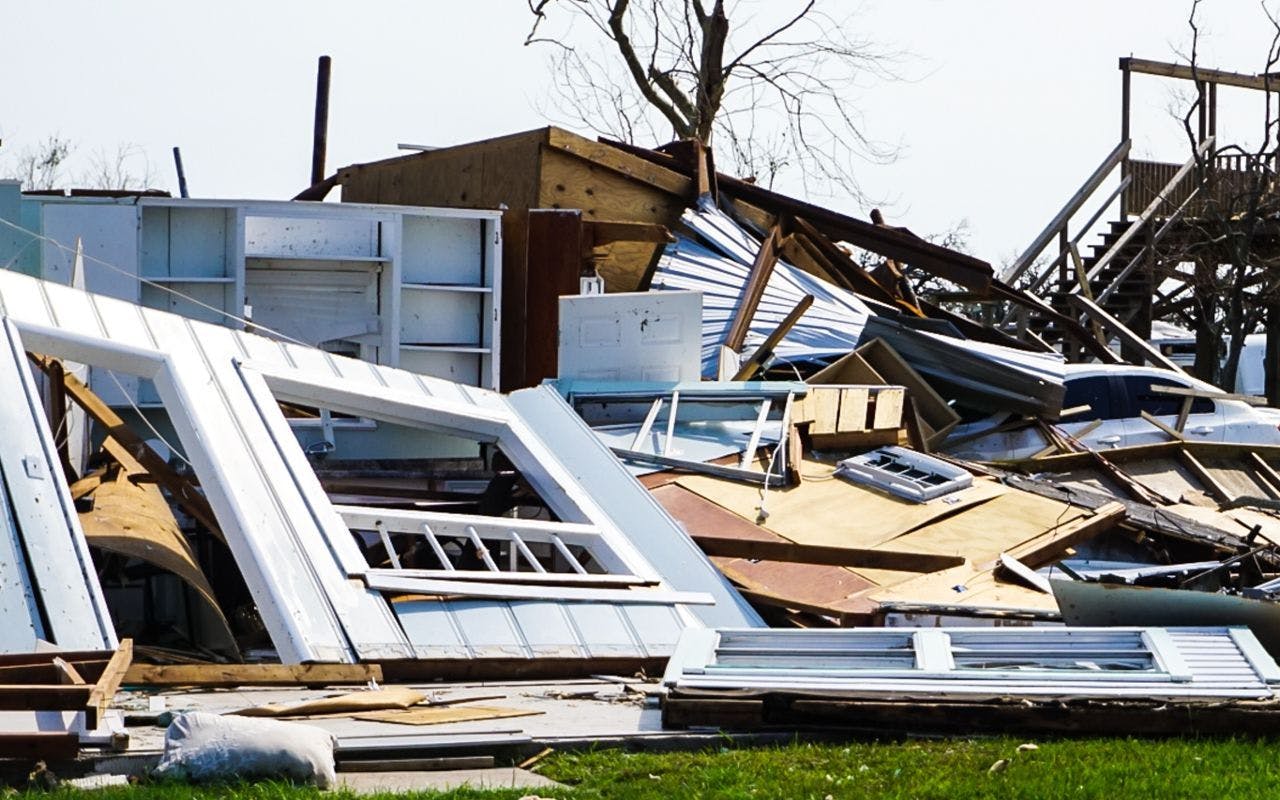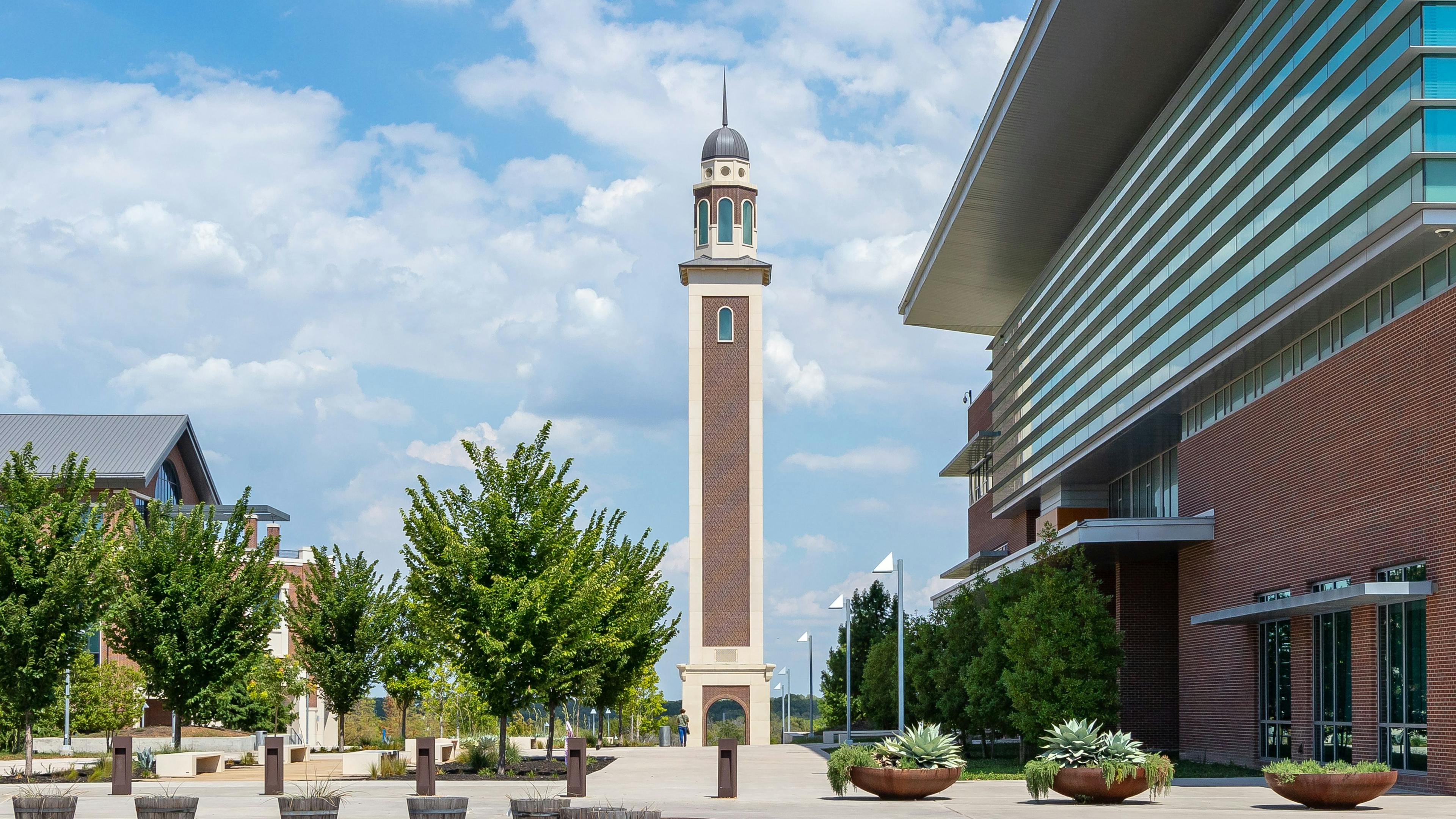
Rising Above: Contending With Hurricane Harvey's Aftermath
In the days and weeks after Hurricane Harvey’s cataclysmic late August landfall, the resilience of the south Texas construction community and the area that it serves was put to the ultimate test. The largest storm to hit the United States since 2005, Harvey slammed into Rockport, Texas, as a Category 4 hurricane, and then it dumped more than 40 inches of rain as it meandered across southeast Texas and southwest Louisiana.
It would become the wettest—and one of the costliest—storms in U.S. history, displacing more than 30,000 people and prompting Texas Gov. Greg Abbott to create the Governor’s Commission to Rebuild Texas to address the billions of dollars in damages. Consequently, demand surged for construction, machinery, building products and engineering firms—a trend that will likely continue for years.
Associated Builders and Contractors (ABC) offices from Corpus Christi to Nederland were impacted to varying degrees, along with hundreds of member companies. In impressive fashion, an army of ABC volunteers helped with evacuations, food, clothing and shelter, as well as aided customers with repairs and restorations—even as some dealt with their own personal tragedies.
The membership of ABC’s Southeast Texas Chapter in Nederland suffered the worst of the flooding. Chapter President/CEO Kimberly Bernard watched the hurricane on television, worrying that her sister’s house in Houston would flood, never thinking that her own home would fall in the crosshairs. But by 3 a.m. on Aug. 30, the floodwaters were lapping at her front door.
“For a while, I controlled the water with blankets, but that wind wouldn’t lay and the water just kept coming,” Bernard says. Thankfully, her son-in-law came to the rescue in a small flat-bottomed boat. By then, it was daylight and the water had risen by about a foot.
The ABC office in Nederland was spared from the flooding, and the board of the Southeast Texas Chapter quickly called a meeting to determine the scope of the damage and map out next steps. Initially, not much could be done. In the days that followed, the floodwaters continued to rise and flooded streets made it impossible to get to jobsites.
Once roads were passable, ABC member contractors and suppliers began assessing the damage. Motion Industries – Drago Supply Division’s Groves and Port Arthur branches played key roles in getting materials to its industrial customers, even as they responded to the needs of their own employees. The company supplies power components such as motors, pumps, drives, belts, chains etc., along with power tools, hand tools, safety apparel and welding supplies.
Several weeks later, the company was still running double time. “We’re short on people, so everybody’s wearing several hats,” says Brent Rozell, account representative. “Everyone’s doing everything they can to make sure the customer gets served. We have a number of key customers that were greatly impacted. They need to get back up and running.”
Due to some strategic planning, Motion Industries was able to mobilize rapidly after the storm. “We did some staging of items that we knew were likely to be needed, and we moved those in as soon as the channel of transport opened,” Rozell says.
Craig Messer, vice president of ISC Constructors, says while his company’s Beaumont office was only minimally impacted, about 10 percent of his workforce (the office employs more than 250 people) had to deal with flooded homes. Another problem was the Beaumont water supply was shut off as the Neches River crested and flooded city pumps.
“We went from having city water to nothing for about five days,” Messer says. “Even though we were open, that significantly impacted our office.” Fortunately, a team of about 60 people—comprised of ExxonMobil personnel, contractors such as Tiger Industrial Rentals, Echo Maintenance LLC and Bo-Mac Contractors Ltd., and city employees—worked with the city around the clock to develop a temporary solution to help restore water service.
Through it all, Messer says ISC has remained cognizant of its industrial clients’ needs, boosting its local workforce by 25 percent to meet demand. After all, electrical and instrumentation repairs are at the top of the list in most flood situations. “The affected industrial facilities here had motors go under water,” Messer says. “You have to troubleshoot those motors and see if they are still good, and there’s a lot of piping and instrumentation that goes along with that.”
Elsewhere in the state, communities just north of Corpus Christi caught the full force of the Category 4 hurricane winds and storm surge as Harvey made landfall on Aug. 24. The Rockport area, in particular, was devastated by the high winds and storm surge.
Members of the ABC Texas Mid Coast Chapter, such as communications supplier VCS Companies in Victoria, some 60 miles north of Rockport, quickly heeded the call and began meeting the needs of customers and the local community.
While VCS sustained water damage, lost electricity and phones for about three days, its losses were comparatively minor.
“Our VCS location was stocked and ready to help with phones, tablets and accessories,” says Lynda Parma, spokesman for the company. “VCS was available to run service calls, help people communicate, help with cleanup and assist customers’ mode of operations.”
When an existing industrial customer, Formosa Plastics, lost fiber optics, VCS worked four, 14-hour days to run 2.5 miles of aerial fiber optic cable to get them back up and running. Along with Motorola, VCS also assisted the Aransas County Sheriff’s Office by erecting a portable communications tower and supplying 50 radios, as well as supported the community by volunteering and providing needed donations.
“We are blessed that we are able to pay it forward to those that were, and still are, in need,” Parma says.
Workforce Strain and Other Concerns
Perhaps one of the more significant long-term impacts across southeast Texas will be the strain that the disaster places on an already limited supply of skilled laborers, particularly in the corridor from Houston to Lake Charles, La. Several plants along Interstate 10 were already in a manpower bind, and the storm certainly exacerbated the problem.
ABC’s Bernard says while many of the plants already had sufficient contractors nested at their sites, the problem has been available housing. “One industrial site has a tent city set up across the street in a laydown yard,” she says. “The mobilization and the coordination and the logistics of all that is to be awed.”
Messer says ISC plans to utilize nearly all of the workers it added following the flood as it ramps up other projects in southeast Texas and southwest Louisiana. “The people we’ve picked up here are going to end up transferring to other long-term projects,” he says, adding that a possible silver lining is wage rates could increase. “We hope that it equates to long-term wage help for some skilled craft positions. It has been 10 years since the last major wage increase for many of these craft professionals.”
Russell Hamley, president of the ABC Greater Houston Chapter, foresees a short-term spike in workforce demand for the Houston area due to storm repairs. “We see this in the industrial and commercial markets, but also residential because about 120,000 homes had water in them,” Hamley says. “We don’t have a worker shortage, we have a skilled worker shortage. There are plenty of workers for pulling out carpet or sheet rock and taking trash to the dump. The skilled worker shortage, where you have to know something to put materials back into place, is where the challenge is.”
Terry McAlister, president and CEO of the ABC Texas Gulf Coast Chapter in Freeport, says while many plants and contractors in her area dodged a bullet in regard to Harvey, the local workforce was still depleted somewhat as “travelers” fled the area in advance of the storm. “Some of them didn’t come back and moved on to something else,” McAlister says. Fortunately, the impact of their departure has been minimal and industrial owners’ businesses have been running relatively smoothly in the area.
Looking Ahead
Hamley says his office and contractor members fared better from Harvey than originally feared.
In general, only about 5 percent of Houston area contractor personnel were impacted by the storm and subsequent flooding. He attributes their resilience to design improvements made in the wake of previous storms.
Going forward, Hamley expects renewed fervor on the part of ABC and other groups to attract federal funding for the “Ike Dike,” an estimated $15 billion project that would create a 70 mile, 17-foot-high coastal barrier to protect Galveston Bay from future storm surges for the next 100 years.
The project, which is currently undergoing an environmental impact study, would include a dramatic enhancement of the existing Galveston Seawall and would extend across Galveston Island and the Bolivar Peninsula.
“ABC has been neutral on it, but I think we will take a strong position in favor of it now,” Hamley says. “However, while that should protect us from a storm surge, it won’t do a thing if it rains 50 inches. That’s another story.”
Sam Barnes worked more than two decades as a McGraw-Hill Cos. regional editor and Engineering News-Record regional correspondent. He currently provides freelance writing and photography for a variety of businesses and publications. He earned his MBA at Louisiana State University in 2001 and a bachelor's degree in journalism at University of Louisiana Monroe in 1986.
Related stories








